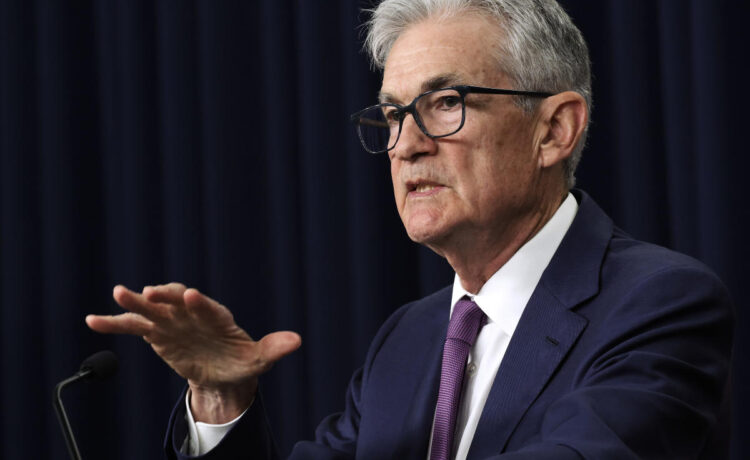The Federal Reserve held interest rates at a 23-year high Wednesday while scaling back its estimate of rate cuts this year to one from three previously.
The central bank voted to keep its benchmark interest rate in a range of 5.25%-5.50% at the conclusion of its two-day policy meeting. The fed funds rate has been in this range since July 2023.
It was a close call on the revised median of rate cuts predicted for this year. Eight officials estimated two cuts this year, while seven officials predicted one cut. Four officials saw no cuts happening this year.
At the same time Fed officials boosted their collective forecast for the number of cuts expected next year. They now see a median of 4 additional rate cuts happening in 2025. That is up from a prior forecast of 3.
Fed officials on Wednesday also raised their 2024 outlook for inflation, seeing prices end the year at 2.8% from 2.6% previously as measured by their preferred inflation measure — the “core” Personal Price Expenditures (PCE) index.
But in a policy statement Fed officials did make a notable change in language reflecting some new optimism.
Instead of stating that “there has been a lack of further progress towards the committee’s 2% inflation objective,” the statement asserted that “there has been modest further progress” toward that goal.
Still, officials reiterated in their statement they need to see confirmation in the outlook for inflation returning to the Fed 2% target before cutting rates.
“The Committee does not expect it will be appropriate to reduce the target range until it has gained greater confidence that inflation is moving sustainably toward 2 percent,” the statement read.
Fed chair Jerome Powell at a press conference declined to offer any guidance on when a first cut could happen, saying to reporters that “I don’t have a precise date for you” and that “we can’t know what the future holds.”
But he did confirm some central bank optimism about a cooler-than-expected May inflation report released earlier Wednesday and what that might mean for the coming months.


“We welcome today’s reading and hope for more like that,” he said.
The Fed chair also made it clear while responding to a question from Yahoo Finance that he is well aware of the “two-sided” risks of waiting too long to cut rates or cutting too early, thus undoing all of the work done to get inflation down.
“We have the ability now to approach this question carefully and that’s what we are doing,” he said, adding that it is not the Fed’s plan to “wait for things to break and then try to fix them.”
The ‘dot plot’
The new projections released Wednesday came in the form of a so-called “dot plot,” a chart updated quarterly that shows the prediction of each Fed official about the direction of the federal funds rate.
In March, the dot plot revealed a consensus among Fed officials for three cuts in 2024. That projection came into question following a string of sticky inflation readings during the first quarter and cautious commentary from Fed officials.
The last reading from that index showed the year-over-year change holding at 2.8% in April from March, a confirmation that inflation had stopped accelerating after a sticky first quarter.
More evidence of a moderation on the inflation front came earlier Wednesday when a new reading from the Consumer Price Index (CPI) rose 3.3% over the prior year in May — a deceleration from April’s 3.4% annual gain in prices.
The year-over-year change in “core” CPI — which excludes volatile food and energy prices the Fed can’t control — was 3.4% compared with 3.6% in April and 3.8% in March.
Powell has previously made it clear that, before cutting rates, the Fed will need more than a quarter’s worth of data to make a judgment on whether inflation is steadily falling toward the central bank’s goal of 2%.
The odds of a first cut in September rose following the CPI report Wednesday morning and stayed at 58% following Powell’s comments.
Read more: What the Fed rate decision means for bank accounts, CDs, loans, and credit cards
The September meeting is viewed by many as an optimistic case for a first cut. For that to happen, two more inflation reports in the coming months would likely need to show improvement for the central bank to pull the trigger.
On Wednesday Fed officials also retained their unemployment outlook at 4% and retained their GDP outlook of 2.1% for the year.
They also raised their outlook for the neutral rate — the rate that neither boosts or slows growth — to 2.8% from 2.6% previously.
The Fed’s rate decision was unanimous.
Click here for in-depth analysis of the latest stock market news and events moving stock prices.
Read the latest financial and business news from Yahoo Finance

















